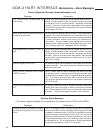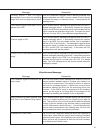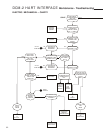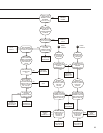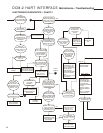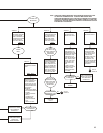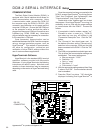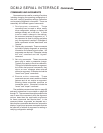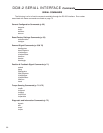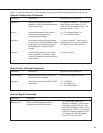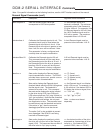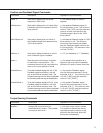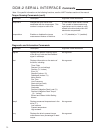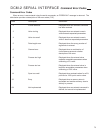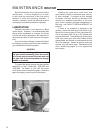
67
DCM-2 SERIAL INTERFACE Commands
COMMANDS AND ARGUMENTS
Commands can be used for a variety of functions
including changing the operating configuration of
the drive, verifying operation settings, calibration
and accessing diagnostic information. There are
essentially four different types of commands:
1. Dual-purpose commands. These
commands can be used to either modify
drive configuration settings or display the
settings already set in the drive. In order
to set or make a change to the settings,
the command requires an argument (n). If
the command is used for display purposes
only, the argument is omitted. Examples of
these commands include "dead band" and
"demlos".
2. Display only commands. These commands
are used to display diagnostic or operating
information like present signal values. No
arguments are required. Examples include
the "stat" command and the "signals"
command.
3. Set only commands. These commands
serve only to make a parameter change.
Typically, they apply to the drive calibration.
This type of command requires an argument,
but unlike dual-purpose commands, they
return an error message when entered
without an argument. Examples include the
"demis" and "posis" commands.
4. Execute action commands. These
commands serve to reset, enable or disable
features and do not require an argument.
Entering these commands produces an
immediate action. Examples include the
"revert" and "torqen" command.
The available commands are listed on page 68
and each is described in more detail on pages 69
through 72. The command description explains the
use or uses of the command, while the argument
column describes the applicable arguments
for those commands that require them. In the
command tables, arguments are denoted as n.
Note that the commands described as "sets and/or
displays" signify dual purpose commands that can
be used with or without an argument for setting or
verifying configuration settings.




